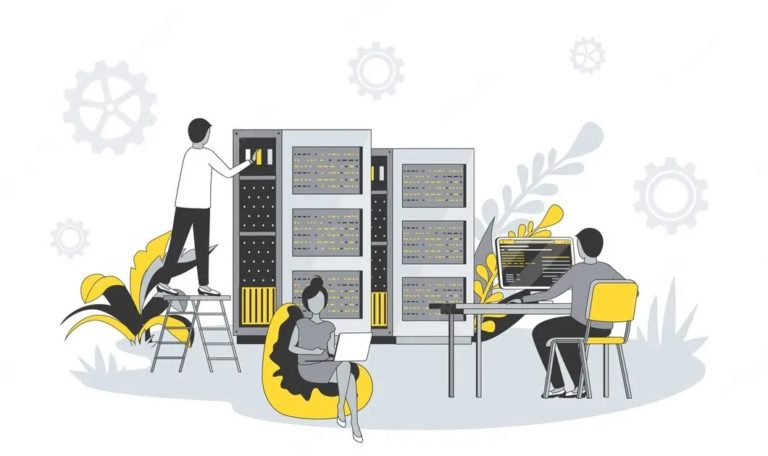Introduction
Mentoring is a relationship-based learning process where a more experienced individual shares knowledge, skills, and perspectives with a less experienced individual to support their personal and professional growth. Mentoring can take various forms, such as informal, formal, peer, and group, and can occur in diverse settings, such as schools, workplaces, communities, and online platforms. In recent years, the mentoring platform has created new opportunities and challenges for mentoring practices. This blog will explore how a mentoring platform operates, its benefits and limitations, and best practices for using it effectively.
How does a mentoring platform operate?
A mentoring platform is an online platform that connects mentors and mentees from different backgrounds, industries, and locations, and provides tools and resources for facilitating their mentoring relationship. The specific features and functions of a mentoring platform can vary depending on the provider and the target audience, but some common elements include:
Matching mentors and mentees
Mentoring platforms usually use algorithms or manual processes to match mentors and mentees on the basis of their profiles, preferences, and goals. The matching criteria can include factors such as expertise, experience, location, language, and availability. Some platforms allow mentors and mentees to search and choose each other based on their interests and compatibility.
Communication and scheduling tools
Mentoring platforms typically offer various communication channels for mentors and mentees to interact, such as email, chat, video conferencing, or phone. The platform may also provide scheduling tools to help mentors and mentees coordinate their meetings and activities, such as calendar integration, appointment booking, and reminders. Some platforms offer translation services to support cross-cultural mentoring.
Goal-setting and progress tracking
Resource sharing and feedback mechanisms
Mentoring platforms can serve as a repository of mentoring resources, such as articles, videos, webinars, or best practices guides. The platform may also facilitate peer-to-peer or mentor-to-mentee feedback and mentoring circles, where multiple individuals can share their experiences, challenges, and solutions. Some platforms encourage mentors and mentees to provide ratings and reviews of their mentoring experience to help others make informed decisions.
Benefits of a mentoring platform
Mentoring platforms can offer several advantages over traditional mentoring methods, such as:
Mentoring platforms can promote diversity and inclusivity by facilitating mentorship relationships that transcend traditional boundaries of age, gender, race, ethnicity, culture, and social status. Mentors and mentees can learn from each other’s perspectives and experiences, and develop cross-cultural and intergenerational competencies. Mentoring platforms can also provide a safe and supportive environment for individuals who may face discrimination or bias in their local mentoring networks.
Enhanced learning and development
Improved mentorship experience
Mentoring platforms can improve the mentorship experience for both mentors and mentees by providing a structured and supportive framework for their relationship. Mentors can benefit from the guidance and feedback of the platform, and can feel more confident and competent in their mentoring role. Mentees can benefit from the clear expectations and goals of the platform, and can feel more engaged and motivated in their learning process. Mentoring platforms can also provide a mechanism for recognizing and rewarding the contributions & achievements of mentors and mentees.
Challenges and limitations of a mentoring platform
While mentoring platforms can offer many advantages, they also face some challenges and limitations which need to be addressed, such as:
Dependence on technology and internet connectivity
Mentoring platforms rely heavily on technology and internet connectivity, which can pose risks of technical failures, security breaches, or data privacy violations. Mentors and mentees may also face difficulties in accessing the platform or using its features, especially if they have limited digital skills or resources. Mentoring platforms need to ensure that their technology and infrastructure are reliable, secure, and user-friendly, and that they provide adequate technical support and training to their users.
Cost and sustainability
Mentoring platforms may have a cost and sustainability issue, as they need to balance the affordability and accessibility of their services with the financial viability and scalability of their business model. Mentoring platforms may have to charge fees or commissions from their users, or seek funding from investors or sponsors, which can affect the affordability and accessibility of their services. Mentoring platforms need to find a balance between their financial sustainability and their social impact, and to explore innovative and collaborative models for scaling their operations and impact.
Best practices for using a mentoring platform
To maximize the benefits of a mentoring platform and to overcome its challenges and limitations, mentors and mentees can follow some best practices, such as:
Clearly define goals and expectations
Mentors and mentees should establish clear and realistic goals and expectations for their mentoring relationship, and should align them with their personal and professional development needs and aspirations. They should also communicate their goals and expectations to the mentoring platform and to each other, and should review and adjust them periodically as needed.
Practice active listening and feedback
Mentors and mentees should practice active listening and feedback skills, and should strive to understand each other’s perspectives, needs, and feedback. Foster accountability and commitment
Mentors and mentees should foster a culture of accountability and commitment in their mentoring relationship, and should take ownership and responsibility for their goals and actions. They should also communicate regularly and proactively with each other, and should seek and provide support and feedback when needed.
Conclusion
Mentoring platforms can offer a powerful and accessible tool for mentoring practices, and can enable individuals from diverse backgrounds and locations to connect and learn from each other. However, mentoring platforms also face challenges and limitations that need to be addressed, such as technical risks, personal interaction barriers, quality control, and sustainability issues. To use a mentoring platform effectively, mentors and mentees can follow some best practices, such as clearly defining goals and expectations, establishing rapport and trust, practicing active listening and feedback, and fostering accountability and commitment. By doing so, they can maximize the benefits of mentoring and contribute to their personal and professional growth and development.










